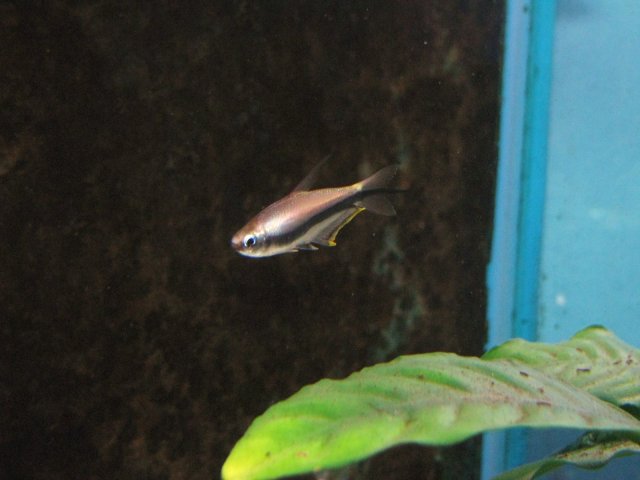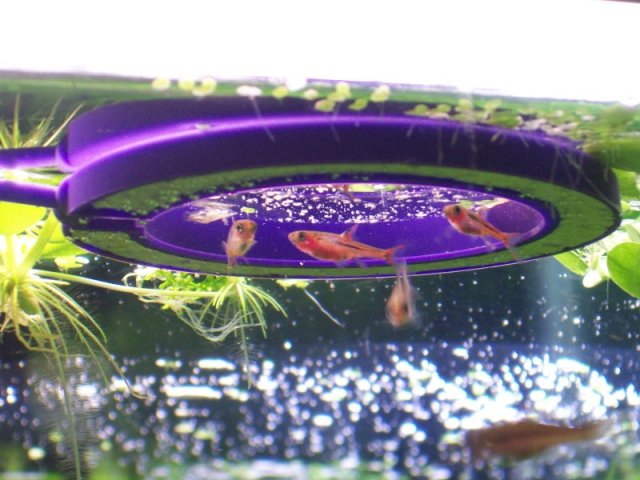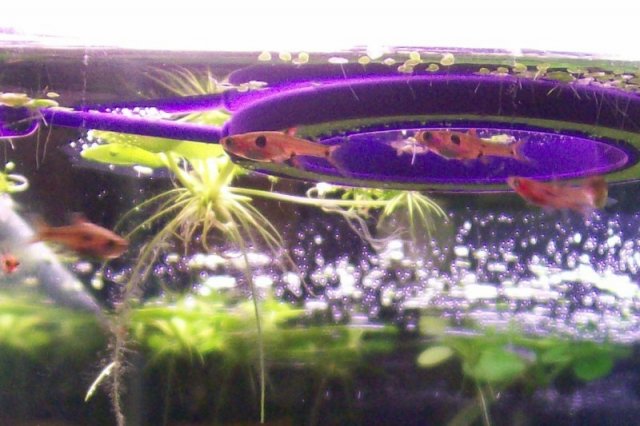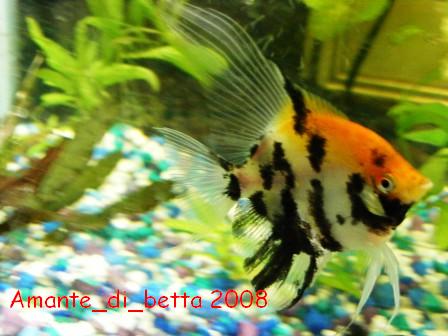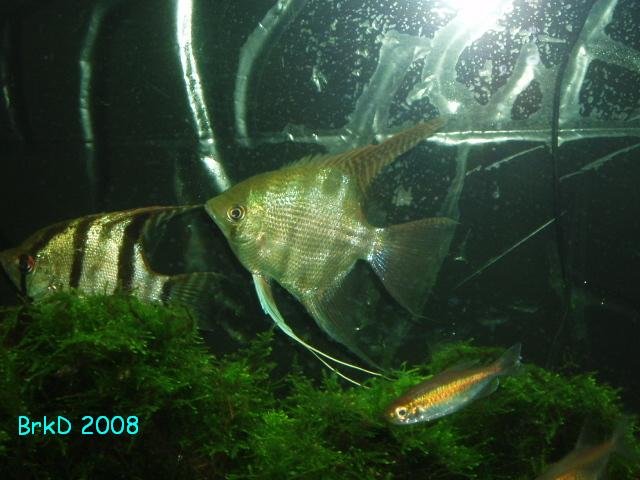Lupin
Registered Member
- Sep 21, 2006
- 21,430
- 13
- 0
- Real Name
- Paul
Black Phantom Tetra (Megalamphodus megalopterus)
Scientific Name: Megalamphodus megalopterus
Common Name: Black Phantom Tetra
Care Level: easy
Size: 1.75 inches
pH Range: 6.0-7.5
Temperature Range: 22-28 degrees Celsius (72-82° F)
Origin: Brazil
Temperament: peaceful
Compatible Tankmates:
They make a great addition to the community aquarium. It is highly recommended to keep these fish in schools of six or more. The aquarium should be dimly lit with floating plants and driftwood if available. These fish are only to be kept with other smaller fishes such as other tetra species and corydoras.
Diet:
Omnivorous.
Tank Size for Adult: 15g for a group of 8.
Narrative:
An attractive and peaceful member of the tetra family, Black Phantoms make an stunning contrast fish to their red hued cousins such as the Red Phantom, Jewel, or Serpae tetras. Their flat oval body is silvery gray with a distinctive splash of black edged in white just behind the gills. The fins of the male are edged in black, while the fins of females have a reddish hue which somtimes causes them to be confused with other species of tetras.
References: www.freshaquarium.about.com
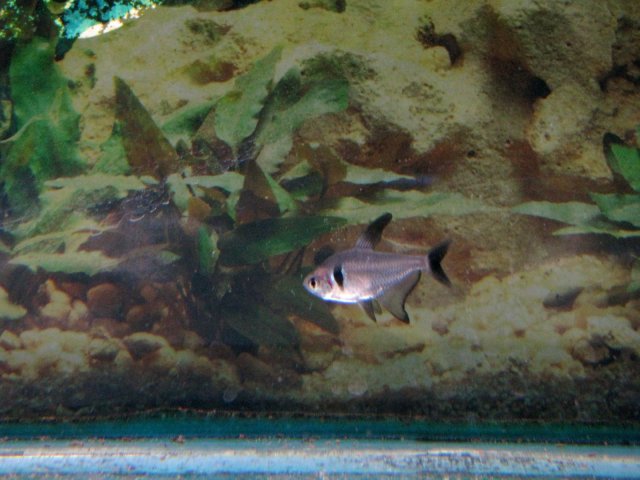
Scientific Name: Megalamphodus megalopterus
Common Name: Black Phantom Tetra
Care Level: easy
Size: 1.75 inches
pH Range: 6.0-7.5
Temperature Range: 22-28 degrees Celsius (72-82° F)
Origin: Brazil
Temperament: peaceful
Compatible Tankmates:
They make a great addition to the community aquarium. It is highly recommended to keep these fish in schools of six or more. The aquarium should be dimly lit with floating plants and driftwood if available. These fish are only to be kept with other smaller fishes such as other tetra species and corydoras.
Diet:
Omnivorous.
Tank Size for Adult: 15g for a group of 8.
Narrative:
An attractive and peaceful member of the tetra family, Black Phantoms make an stunning contrast fish to their red hued cousins such as the Red Phantom, Jewel, or Serpae tetras. Their flat oval body is silvery gray with a distinctive splash of black edged in white just behind the gills. The fins of the male are edged in black, while the fins of females have a reddish hue which somtimes causes them to be confused with other species of tetras.
References: www.freshaquarium.about.com



